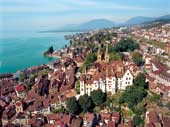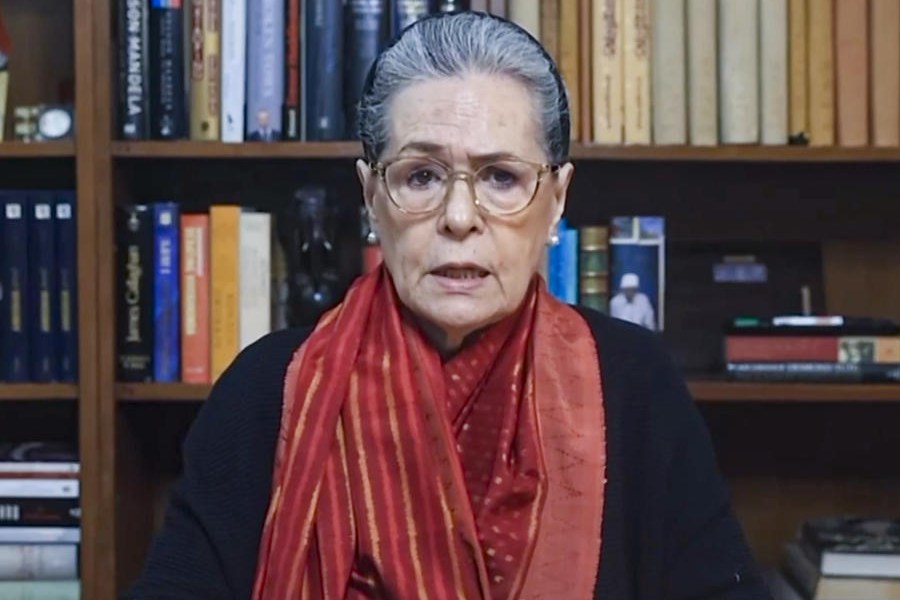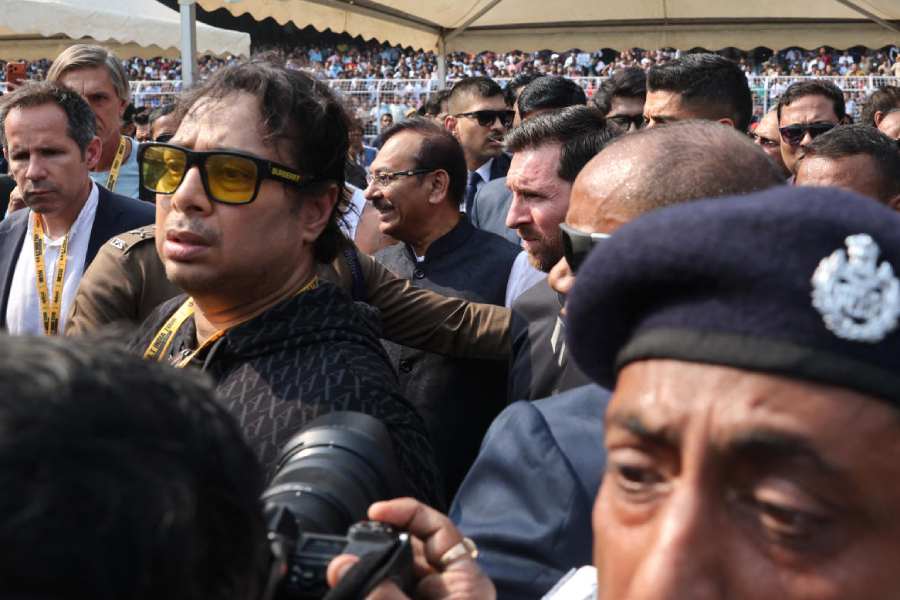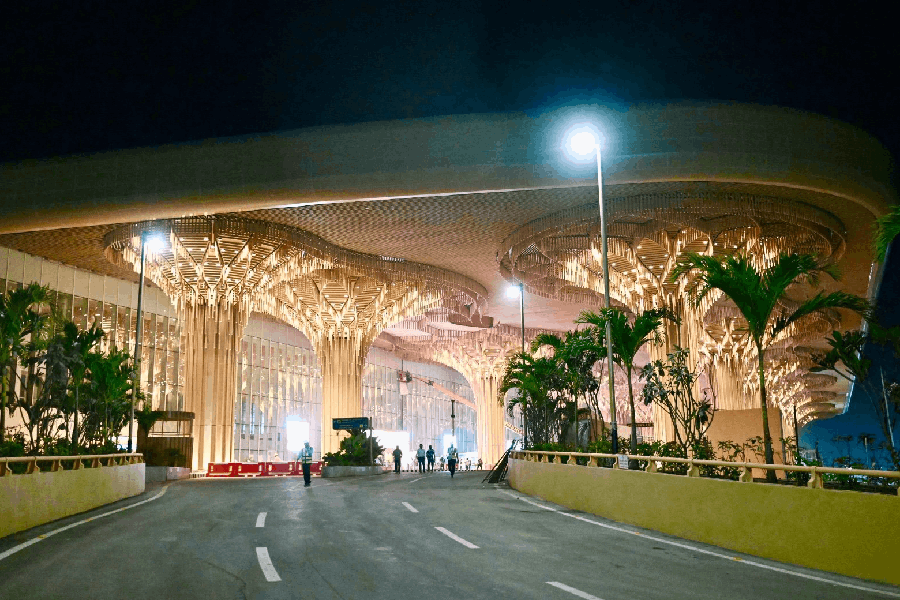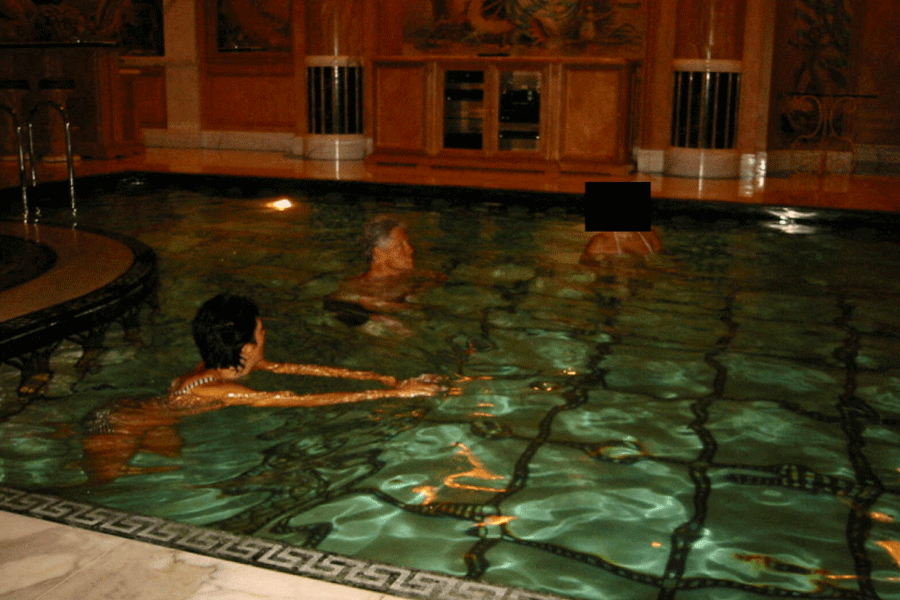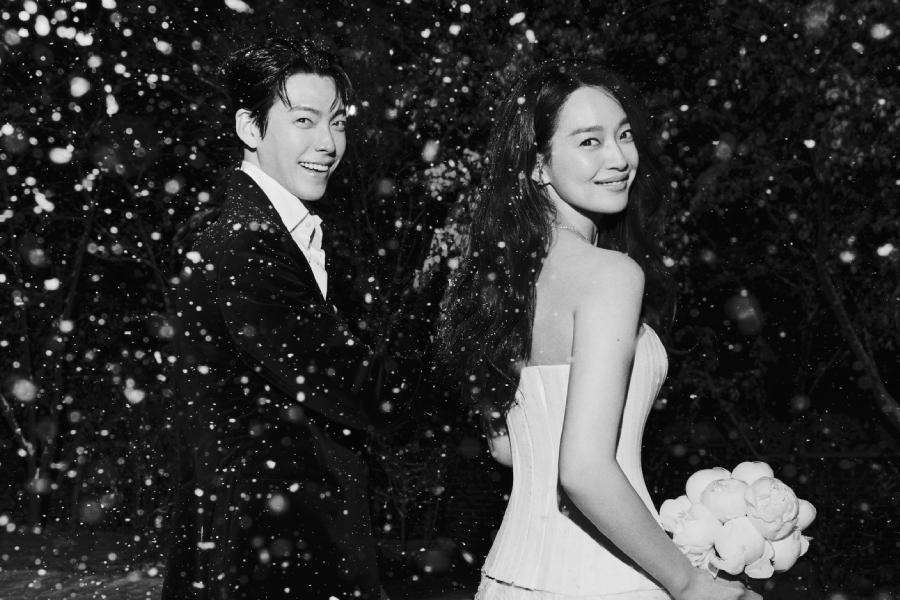 |
| An aerial view of Neuchatel town |
 |
| Tourists at the Etang de la Gruère pond |
 |
| The picturesque village of St-Ursanne |
 |
| The Post Bus winds its way through the countryside |
 |
| A boat ride on the Biel Lake is a great way to soak in the sights |
Pushing a chilling 100kmph, the trottinettes careened sharply down the Alpine road. At 1,609m, somewhere in the Swiss Alps, a bunch of wide-eyed tourists went screaming down the mountainside on the precarious contraptions that are simply bigger versions of the two-wheel kick scooter. Down the mountain slopes they pick up speed faster than you can say cheese.
The trottinette — that’s thankfully armed with powerful brakes — is as much a part of the picture-postcard landscape as the dappled cows that grazed lazily, their bells providing the background music of Switzerland.
We were driving through the Switzerland’s ‘Watch Valley’, the strip of northwest Switzerland that stretches all the way from Geneva to Basel. It includes the Jura region and the stunning Bernese Jura. All the clichés about the unparalleled beauty of Swiss landscapes apply to this region.
It’s a route to take when you want to combine a nature trail while also ensuring a ringside view of Switzerland’s famed watchmaking industry. It winds some 200km through mountains, and it’s where some of the world’s most prestigious watches are made (you’ll also bump into Aishwarya Rai now and then as she gazes out fixedly from every Longines advert).
On the way, you can get a taste of life in this Alpine country, from picture-perfect quaint towns, Swiss army knives, wind turbines (yes, the good old windmills), cheese, chocolates, fondue and the occasional meal of horse. (Statutory warning: forget serious shopping. Sheer wallet self-preservation).
Be warned that travelling round Switzerland isn’t cheap. Before setting off on the watch trail it’s best to invest in the handy Swiss Pass. It’s your key to unlimited travel on the country’s tram, rail, bus and boat network. A 4-day pass on second class costs around CHF 250 (Rs 9,000) and CHF 378 (nearly Rs 13,900) for first class, an 8-day second class pass costs CHF 362 (Rs 13,000) and CHF 543 (Rs 19,900) for first class travel. The 15-day pass costs CHF 440 (Rs 16,100) for second class travel and CHF 660 (Rs 24,200) for first class.
But that out of the way, it’s easy finding your way around the country. And as you chalk out the itinerary, make sure to take a ride or two on the country’s trademark Post Bus. It’s the sunshine yellow luxury bus that connects big cities to even the smallest hamlets and is proudly celebrating its centenary this year. By the way, the Swiss are extremely sentimental about its sing-song hooter.
The first spot to hit on the watch trail is the Bernese Jura (Jura Bernois in French) and its top towns — Tramelan, La Neuveville, Saint-Imier, Moutier and Tavannes. Hauling yourself to Tramelan is easy if you have landed in Zurich. You’ll need to change trains (at Biel, Sonceboz-Sombeval and Tavannes) so ensure that you travel extra light keeping in mind that the trains also run with Swiss clockwork precision and that the stations (just like its hotels) are porter-free.
You can tell easily that Tramelan is a watchmaking town. The large, multi-window homes are the dead giveaway. The huge windows vitally let in natural light to help the watchmakers execute delicate moves. The town is also famous for the CIP or the school for watchmakers. It’s where adult students flock to sharpen their watchmaking skills after working hours.
But there’s more to the town than just watches. Visitors shouldn’t leave town without visiting Bellelay where the region’s delectable Tete de Moine cheese is made. The monks of the Abbey of Bellelay were the first to make this cheese, but today it is produced commercially and even exported.
The abbey’s museum offers an up close view of how the cheese is made — with a monk and all. Here you’ll learn that if the sophistication of wine depends on the region where the grapes are grown, then the distinctive character of the cheese depends on the pastures where the cows graze. Here in Bellelay the cattle feed on the mixture of spicy grasses and herbs and that gives the cheese its unmistakeable flavour.
From here, Saint-Imier is a short distance away and after a mandatory stop at the Longines factory, you can head for La Neuveville (you can see, but can’t buy as the watches are sold only via their distributors). The town lies at the shore of the Biel Lake, which connects with the Morat and Neuchâtel lakes. So hop on to the boat (the Swiss Pass is valid) for a scenic hour’s jaunt to Neuchatel, the Western, French-speaking part of Switzerland.
If you’ve decided on a full immersion into a region, Neuchâtel is a priority stop in Watch Valley, with its museums and workshops. And when you tire of watches and the relentless ticking of time, Neuchâtel Lake is a great spot to simply hang around without an agenda. If you drive a bit further out of town you’ll be passing the Neuchâtel vineyards.
In Neuchâtel you can gawk at over 4,000 exhibits at the International Timepiece Museum. But this region is also a great place for anyone who likes their tipple. For this is the centre of absinthe production. Absinthe is the strong herbal liquor that’s distilled with a number of flavourful herbs like anise, licorice, veronica, fennel, lemon balm, angelica, and many more besides.
Banned in the 1920s, no absinthe was produced for some 70 years. Today there are some 19 legal producers who distil this portion using anywhere from seven to 40 herbs. A litre bottle will set you back by CHF 50 or so — a must buy.
For Indian tourists who are doing an extended stopover in Neuchâtel, it’s a good idea to throw in an excursion to La Chaux-de-Fonds. This is where Le Corbusier, the great 20th century architect, was born. Since he has strong links with India, it might be interesting idea to check out his first piece of work — the Maison Blanche (or White House) which the young Le Corbusier designed for his parents.
From Neuchâtel, head deep into the Jura canton — the youngest of the Swiss cantons (or states) that lies at the crossroads of the French and German cultures. A thumbnail sketch of the region: its frontier with France is 121km-long and stretches for 111km alongside the neighbouring cantons of Basel-Campagne, Soleure, Berne and Neuchâtel.
Picturesque, off the beaten track towns are easy to find in this region. One village that fits the bill is St-Ursanne by the river Doubs. And it’s not far from the French border. On the way we stopped for a breath of Alpine air at Etang de la Gruère. It’s a large pond with sparkling blue waters, swishing fish and somnambulant ducks. It may not sound like much, but it was quite enchanting.
The village of Saint-Ursanne meanwhile redefines sleepy as it has less than 1,000 inhabitants. It’s easy losing yourself in the history of its Collegiate Church which was begun in the 12th Century and completed over subsequent centuries. The stone bridge is the perfect spot for a touristy picture.
Switzerland is where the world’s most prestigious timekeepers tick. And the watch-making route is a great place to take time off.

